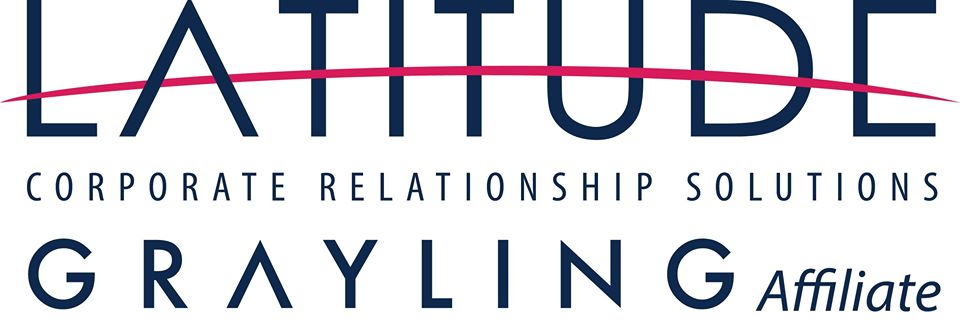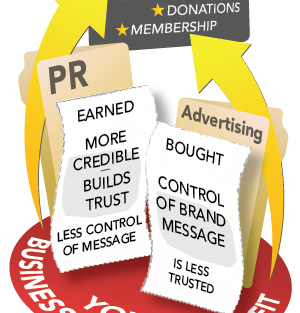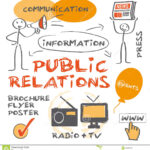Both advertising and PR help build brands and communicate with target audiences. The most basic difference between them is that advertising space is paid while public relations results are earned.
Both advertising and PR help build brands and communicate with target audiences. The most basic difference between them is that advertising space is paid while public relations results are earned through providing the media with information in the form of press releases and pitches. For example, you have to buy online banner ad space, but you can pitch a story to a news outlet. There is also something called ‘owned’ media which is the content you create for your website or photos and videos you produce for social media.
Now let’s get down to the nitty gritty, and explore some of the other factors that make these two marketing avenues very different:
- Target: While companies and organizations are creating advertisements that primarily target potential customers, PR professionals are hoping to cast a wider net. Publics targeted through PR can be internal or external. They can include employees, investors, customers, the media, legislators, and many more. There is also a new category called influencers, which refers to people who have a lot of connections personally, like celebrities or politicians, or who have a large following on social media.
- Goals & Objectives: Public relations helps build brand awareness and reputation. The goals and objectives behind a successful PR campaign revolve around the fact that consumers place more trust in and are more likely to do business with a company they know and admire. Advertisements are generated for a specific target market in order to generate sales. They usually focus more on promoting a product or service than on building a reputation.
- Control: When you buy an advertisement, you decide how the advertisement will look, what it will say, where it will be placed, and when it will run. How much exposure your ad receives is largely dependent on how much money you have to spend. When it comes to PR, and specifically working with the media, you have less control. The media decides how your information is presented in the news and if it will even be covered.
- Strategy: With advertising, there is a shorter term goal in mind. Ad copy is geared toward specific buying seasons (think holiday shopping), pushing a new product, or promoting special deals to boost sales. PR professionals are always looking at the big picture, delivering meaningful information about their brand to build a sustainable and dedicated base of “brand fans” that includes consumers and other stakeholders.
- Credibility: Consumers do not believe everything an advertisement tells them. Why? Because whoever is paying for that ad is dictating exactly what the ad says. They’re not going to say “our product is likely to break within a year,” even though that may be the case. Through PR, messages are communicated by a trusted third party, the media, and are far more credible.
So far, the differences are pretty simple and easy to understand, but the ever-growing popularity of social media has started to blur the lines between advertising and public relations. Why? Because social media can be used in numerous ways.
Let’s focus on Facebook. Your Facebook account is something your business created and controls. Unless you hire someone to manage your page, it is essentially cost-free. You can, however, use Facebook for both PR and paid advertising efforts. If you pay to “boost” your post, that is considered advertising. Boosted posts appear higher in the news feed, so there’s a better chance your audience will see them. You can also expose audiences beyond just your fans to the content. On the other hand, you may post a great photo of your new company mascot, a cute puppy, and generate tons of likes, comments, and shares at no cost to you.
The best way to promote a business is to incorporate both public relations and advertising into your marketing strategy in an integrated and coordinated way. Leveraging both mediums enables you to boost the frequency with which target audiences hear your key brand messages and the ways in which they are heard. People must be exposed to a marketing message multiple times before they will remember it.



